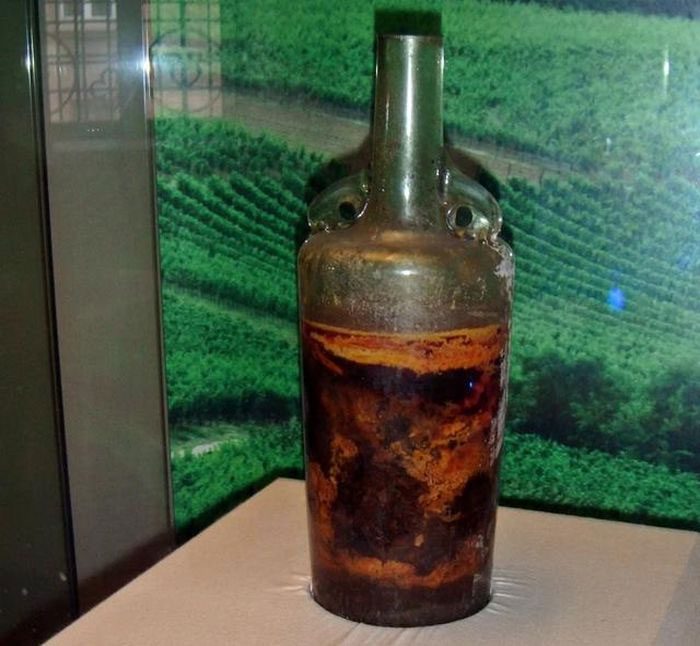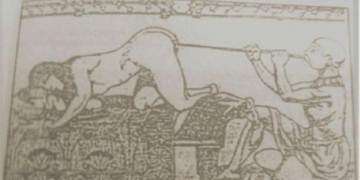Archaeologists believe that the liquid inside a 1,700-year-old wine bottle may still be drinkable, thanks to its special preservation.
This ancient wine bottle, along with several other broken bottles used as grave goods, was discovered by archaeologists in a Roman-era tomb in 1867. The bottle is currently housed at the Palatinate Museum of History in Speyer, Germany.
Experts suggest that the reason the bottle has kept its liquid intact is partly due to being sealed with wax instead of cork, which would have decayed over time, allowing the wine to escape. However, after 1,700 years, the liquid inside the bottle may have lost its wine characteristics and transformed into a different mixture derived from grapes.
Mr. Ludger Tekampe, head of the wine preservation team in Speyer, stated: “It is unclear what would happen if air were to enter the wine.”
The reason for this uncertainty is that no one has definitively identified what the liquid inside the bottle is. Experts have refrained from opening the bottle due to concerns about damaging the liquid.

The 1,700-year-old wine bottle astonishes many experts due to the stable liquid inside. (Photo: Altera levatur)
In reality, despite its astonishing age, the liquid inside the bottle remains incredibly stable. Notably, a thick layer of olive oil used for preservation seems to have been effective. In fact, this layer of oil occupies more space inside the bottle than the wine itself.
The 1.5-liter wine bottle is elaborately decorated with handles inspired by dolphins, estimated to date back to 325 AD. Experts believe that regarding pathogens, this wine bottle may still be safe enough to drink.
Ms. Monika Christmann, a professor of wine studies, shared: “From a microbiological perspective, this wine may not be spoiled. However, it will not provide the pleasure or delight of flavor.”
This expert further noted that aged or matured wines can improve in quality. Although wine is a perishable liquid, allowing sugars, acids, and tannins some time to mature inside the bottle can enhance the palate and aroma.





















































